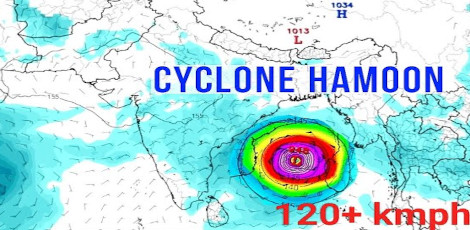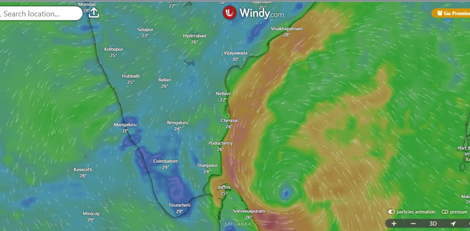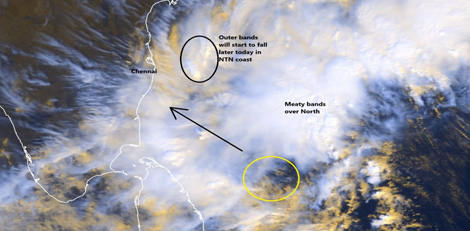Cyclone Hamoon Impact: Chennais Air Quality Deteriorates
Posted on: 26/Oct/2023 5:53:36 PM

As Cyclone Hamoon made its way across Bangladesh, the wind patterns influenced by the cyclone have led to a rise in air pollutant concentrations over Chennai in recent days. According to data from the Tamil Nadu Pollution Control Board (TNPCB), Chennai`s average air quality index (AQI) was recorded at 109 on October 23. This figure increased to 121 on October 24 and further to 127 on October 25 (Wednesday). As of 6 a.m. on Thursday, the AQI stood at 121.7 in Chennai.
K Srikanth, a weather blogger based in the city, explained that the cyclone in the Bay of Bengal has caused winds to flow from the north, originating from land surfaces. "Winds from the north are slow and unable to disperse pollutants from the city. This phenomenon is common during the winter season," he noted. He added that when the wind shifts from the east, as the cyclone weakens, pollutants will disperse, and pollution levels will decrease.
It`s important to mention that not all cyclones in the Bay of Bengal impact wind patterns in a way that increases pollution levels. Among the seven monitoring stations in Chennai, Manali recorded an AQI of 192 on Thursday morning, while Perungudi recorded an AQI of 152. AQI in Kodungaiyur and Arumbakkam was 119 and 111, respectively. AQI levels were comparatively lower in Alandur (104), Royapuram (103), and Velachery (71).
In accordance with air quality norms, an AQI of less than 50 is considered "good," 51 to 100 is "satisfactory," 101 to 200 is "moderate," and 201 to 300 is categorized as "poor."
Additionally, the TNPCB has announced plans to conduct awareness campaigns addressing air pollution, particularly due to the bursting of firecrackers, as the Diwali festival is just around the corner.







